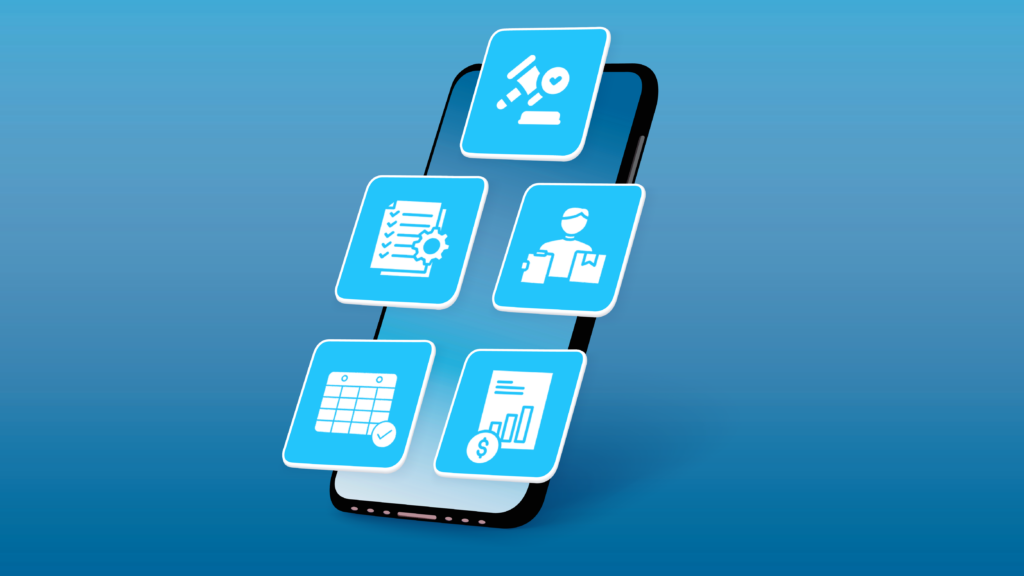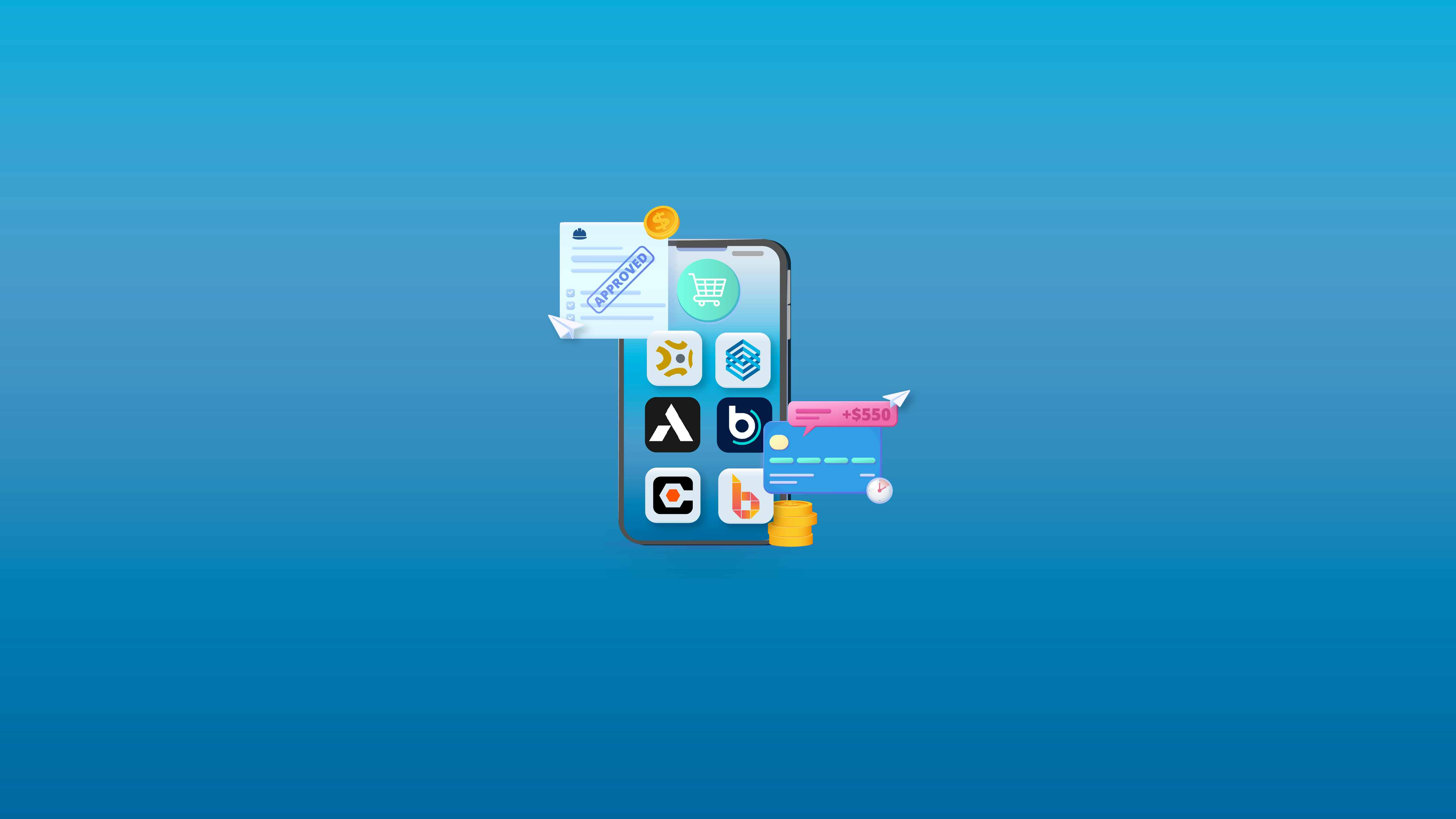Construction companies manage tight budgets, strict timelines, and complex procurement needs, from sourcing materials to managing subcontractors. When procurement is slow or disorganized, costs rise, projects stall, and profit margins shrink. Digital procurement tools like Buildxact, Buildertrend, and SmartBuild streamline the process by automating purchasing, tracking costs in real-time, and improving supplier communication. With the right software, construction firms can cut waste, boost efficiency, and keep projects on track—without the headaches.
Quick look
- Procurement in construction involves sourcing materials, equipment, and subcontractors at the right time and price to keep projects on track
- Digital procurement tools reduce costs, speed up processes, and improve supplier communication by automating purchasing and tracking expenses in real-time
- Selecting the right tool depends on company size, budget, and integration needs
- Top choices include SmartBuild for project management, Procore for large-scale collaboration, and Buildxact for estimating and job tracking
What is procurement in construction?
Procurement in construction is all about getting the right materials, equipment, and subcontractors lined up at the right price and at the right time. It’s a crucial part of any project, making sure things like steel, concrete, or specialized labor show up exactly when they’re needed. When procurement runs smoothly, projects stay on budget and schedule—but when it doesn’t, delays and extra costs pile up quickly.
Traditionally, this process has been pretty manual and paperwork-heavy. Contractors typically request bids, negotiate deals, track deliveries, and manage supplier relationships using spreadsheets, phone calls, and emails. It works, but it’s slow, prone to mistakes, and often leads to headaches.
Why are digital tools important for procurement?
Construction procurement has come a long way from endless paperwork, back-and-forth emails, and last-minute phone calls to suppliers. Instead of chasing down purchase orders or scrambling to find a backup supplier, teams can use digital tools to automate these processes. These digital tools centralize the process of procurement and offer several advanatages over traditional methods.
Benefits of using digital procurement tools
Cost reduction
Digital procurement tools minimize waste and keep spending under control by providing real-time cost tracking. Thanks to information being on one platform, project managers can monitor expenses as they happen, making it easier to spot savings opportunities and avoid unnecessary spending. Bulk purchasing is another significant advantage. Digital procurement platforms allow construction firms to order in bulk and negotiate better deals with suppliers, securing lower prices on high-volume materials.
Increased efficiency
Time is money in construction, and outdated procurement methods can slow projects down. Digital procurement tools speed up the process by automating key tasks like purchase orders, invoices, and approvals. This reduces manual data entry and the risk of human error. All it takes is a couple of clicks to process orders.
Improved communication with suppliers
Instead of making endless phone calls or sending follow-up emails, project managers can check a single dashboard to see when materials will arrive, if there are any delays, and whether adjustments need to be made. A centralized platform for managing supplier relationships also makes collaboration easier. Construction firms can track past orders, compare supplier performance, and store all contracts and communications in one place. This transparency helps prevent misunderstandings, ensures everyone is on the same page, and makes building strong, long-term partnerships with reliable vendors easier.
Risk mitigation
Construction projects have many risks including supply chain disruptions, contract disputes, compliance issues, and unexpected cost spikes. Digital procurement tools mitigate these risks. With digital procurement tools you get access to data. Digital procurement platforms provide real-time insights into supplier performance, material availability, and potential bottlenecks, allowing project managers to anticipate problems before they escalate. By analyzing trends and historical data, construction firms can make smarter purchasing decisions, identify alternative suppliers when needed, and avoid costly supply chain disruptions.
Sustainability and waste reduction
Sustainability is becoming a bigger priority in construction, and digital procurement tools make it easier to reduce waste and make environmentally responsible choices. Companies can order the right materials at the right time, minimizing excess inventory that often ends as waste. Real-time tracking also helps prevent over-ordering and ensures materials are used efficiently, cutting unnecessary disposal costs. Digital procurement platforms support eco-friendly sourcing by helping construction firms identify and work with sustainable materials suppliers.
How to choose the right digital tools for your procurement process
Choosing the right digital procurement software depends on your company’s unique needs. A platform that works for a large general contractor might not be the best fit for a small residential builder.
- Evaluate your business needs and procurement steps: Before investing in a digital procurement tool, examine your existing procurement workflows. Where are the bottlenecks? Are you struggling with supplier communication, tracking costs, or managing contracts? Pinpointing inefficiencies will help you understand what features matter most.
- Identify software solutions that meet these needs: Not all digital procurement tools offer the same features, so choosing one that aligns with your business goals, integrates well with your existing systems, and is easy for your team to use is essential. When comparing software solutions, look for tools that offer:
- Consider your budget and costs: Investing in digital procurement software is a big decision. While there’s an upfront expense, the right tool can significantly reduce waste, cut down on administrative hours, and prevent costly procurement errors—ultimately boosting profitability. Most construction firms prefer subscription-based procurement software due to its scalability, accessibility, and automatic updates. However, if data security and long-term cost control are priorities, an on-premise solution might be worth considering.
- Understand integration capabilities: A digital procurement tool is only as good as its ability to work with your existing systems. If it doesn’t integrate seamlessly with your ERP, accounting, and inventory management software, you could create more problems than you solve. That’s why choosing a platform that connects with the tools your team already relies on is crucial.
Top digital procurement tools for construction

SmartBuild
Features:
- Project management and procurement tracking: SmartBuild centralizes procurement operations, managing contracts, purchase orders, and financials to ensure smooth workflows and cost control.
- Submittals and document control: The platform streamlines material approvals by consolidating drawings, specs, and submittals into one easily accessible system.
- Supplier and subcontractor management: Users can organize supplier and contractor documents, track compliance, and meet project standards.
Best for: Construction firms looking for an all-in-one procurement and project management solution with strong financial and compliance tracking capabilities.
Why use it: SmartBuild simplifies procurement by automating approvals, tracking costs, and integrating supplier management into a single platform. With cloud-based access, teams can ensure materials and services are ordered, tracked, and delivered without delays or budget overruns.
SmartBid
Features:
- Bid management: Streamlines sending invitations to bid, managing bid proposals, and tracking responses, ensuring a more organized bidding process.
- Subcontractor tracking: Maintains a centralized database of subcontractors, allowing for easy management of qualifications, compliance documents, and performance history.
- Supplier integration: Facilitates seamless communication and document sharing with suppliers, enhancing collaboration and efficiency.
Best for: General contractors and project managers seeking to enhance their bid management processes and improve subcontractor coordination.
Why use it: SmartBid simplifies the bidding process by automating tasks, reducing paperwork, and providing a centralized platform for all bid-related activities. This increases efficiency, better organization, and more successful project outcomes.
Archdesk
Features:
- Procurement automation: Archdesk streamlines the entire procure-to-pay process, automating purchase orders, approvals, delivery tracking, and invoice management.
- Cost tracking: The platform offers real-time cost tracking, allowing users to monitor all project expenses, including labor, materials, equipment, and subcontractor costs, ensuring budget adherence.
- Contract management: Archdesk centralizes contract management, enabling efficient handling of subcontractor agreements, supplier qualifications, and compliance tracking.
Best for: Mid-to-large construction firms seeking a comprehensive solution to effectively manage procurement processes, financials, and supplier relationships.
Why use it: Archdesk integrates seamlessly with various accounting software, including Xero, Sage, QuickBooks, and more, facilitating smooth budgeting and financial management. By automating procurement tasks and providing real-time cost insights, Archdesk helps construction companies enhance efficiency, maintain budget control, and improve overall project profitability.
Procore
Features:
- Real-time collaboration: Procore’s cloud-based platform enables seamless communication among project teams, ensuring all stakeholders have access to up-to-date information, enhancing coordination and reducing miscommunication.
- Supplier management: The software offers tools to efficiently manage supplier relationships, track performance, and streamline procurement processes, contributing to more organized and efficient operations.
- Financial tracking: Procore provides comprehensive financial management features, including budgeting, expense tracking, and financial reporting, which help teams control project finances and make informed decisions.
Best for: Large-scale projects requiring complete visibility and coordination among multiple stakeholders.
Why use it? Procore is a complete project management platform that ensures procurement activities align with project timelines and budgets by providing real-time data and collaborative tools. This alignment helps prevent delays, manage costs effectively, and maintain project schedules, leading to successful project outcomes.
Buildxact
Features:
- Estimating: Buildxact simplifies the estimation process with point-and-click features, allowing users to perform digital takeoffs directly from plans and generate accurate cost estimates.
- Job management: The platform offers tools for scheduling, task management, and project tracking, enabling contractors to oversee project timelines and resources effectively.
- Purchase order tracking: Buildxact facilitates the creation and management of purchase orders, ensuring that materials and services are procured efficiently and within budget.
Best for: Small to mid-sized contractors seeking an all-in-one solution for estimating, job management, and procurement processes.
Why use it: Buildxact’s user-friendly interface and powerful automation tools streamline construction management tasks, reducing manual effort and minimizing errors. Users have praised its ease of use and the responsiveness of its technical support team.
Buildertrend
Features:
- Procurement scheduling: Buildertrend offers comprehensive scheduling tools that help manage procurement timelines effectively, ensuring materials and resources are available when needed to keep projects on track.
- Invoice tracking: The platform provides robust financial management features, including invoice creation and tracking, which streamline billing processes and improve cash flow management.
- Supplier communication: Buildertrend facilitates seamless communication with suppliers through built-in messaging and document-sharing features, enhancing collaboration and reducing misunderstandings.
Best for: Residential and commercial builders seeking an all-in-one construction management solution to streamline procurement, scheduling, and communication processes.
Why use it: Buildertrend simplifies procurement workflows with its cloud-based platform, allowing teams to access and update information from anywhere, at any time. This accessibility ensures all stakeholders are aligned, reduces delays, and enhances overall project efficiency.
Bottom line
Digital procurement is transforming the construction industry, making it easier to manage costs, streamline workflows, and improve supplier relationships. By automating key processes and providing real-time visibility into procurement operations, digital tools help construction firms stay on budget, avoid delays, and enhance overall efficiency.
The key to success is selecting the right software for your business. Consider company size, budget, integration capabilities, and specific procurement needs to find a solution that seamlessly integrates into your workflow.
Ready to stay ahead in the industry? Subscribe to our newsletter for more insights, expert tips, and the latest trends in construction technology!


